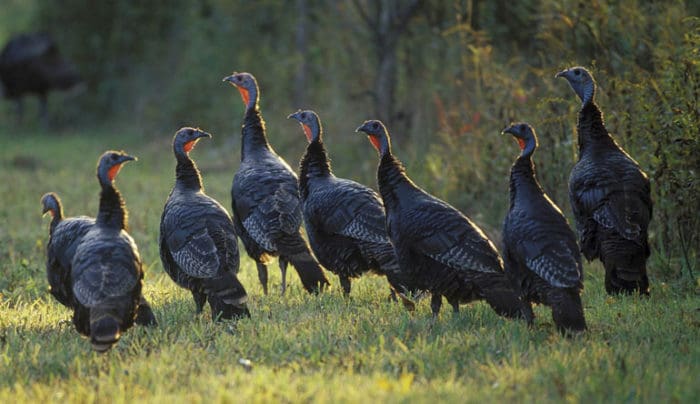Despite the recent weather in the upper midwest this week, spring has officially sprung, and with it spring turkey season. It’s the time of year that tens of thousands of people take to the woods with the goal of getting themselves a gobbler. But besides those birds, something they probably don’t think as much about is that fact that turkey season is proof of the efficacy of the North American model of conservation, balancing the needs and desires of sportsmen with the overall health of a particular species.
The general principle is that game animals are a public trust, a resource owned by everyone. Therefore, they must be protected and managed for both our benefit as well as for future generations going forward in, as Theodore Roosevelt put it, “the womb of time” who will follow us.
Everyone must have the opportunity, as the enjoyment of hunting or the mere pleasure of viewing wildlife cannot be restricted to only a certain class. Funding is obtained through excise taxes levied on firearms and ammunition, as well as the sale of tags so that the people who use the resource pay for its maintenance.
Commercial sale of wildlife, such as meat and fur, is prohibited. Seasons are strictly defined, limits are placed on the harvest of animals, and animals cannot be killed for frivolous reasons. There must be cooperation with neighboring nations, as wild animals have no concept of borders. Conservation efforts must also be rooted in scientific study and principles.
A number of species have benefited from this model, such as whitetail deer, but arguably the biggest beneficiary of this system is the wild turkey. Meleagris gallopovo is found in 49 states today and much of Canada. Americans can hunt gobblers in 49 states. That’s right, there’s even turkey hunting in Hawaii.
In the pre-Columbian era, while the estimates naturally vary, the population of wild turkeys was well into the millions, distributed across what are now 39 states and much of Canada. Additional populations were found across Mexico, extended from the now border regions, down into the Yucatan and into Belize and Guatemala.
As settlers arrived and harvested them without limit for food, their numbers began to dwindle. Deforestation during westward expansion and development certainly did them no favors either.
According to the National Wild Turkey Federation, wild turkeys had become extinct in Connectict by 1812 and in Vermont by 1842.
By 1920, the situation was grim. Those millions of birds had declined to fewer than 200,000. Some estimates peg it as low as 30,000. They were found only in isolated pockets in 18 of the 39 states they had formerly occupied, with hunting being sporadic and restricted by that time.
Regulations such as the federal Lacey Act as well as a number of other state laws limiting hunting helped stop the decline. The Pittman-Robertson Act, an excise tax on firearms and ammunition, helped funnel millions of dollars into national and state fish and wildlife programs, some of which was spent on capturing and relocating flocks of wild birds into new habitats reestablishing the species.
Early restoration efforts began in the late 1920s in the Virginias, and by 1959, 31 states were actively engaged in restoring wild turkey populations. The introduction of cannon nets in the 1950s allowed wildlife personnel to capture whole flocks of wild birds, made trap-and-transport programs wildly successful, as farmed birds quickly perished when released into the wild.
By the mid 1970s, the wild turkey population had rebounded to more than one million animals. Today, there are an estimated seven million wild turkeys in sustaining populations roaming 49 states and six provinces in Canada.
Hunting has also increased. By 1994, an estimated 2.1 million hunters harvested more than 650,000 birds; according to a 2017 USA Today article, the number of hunters is now almost 3 million.
Turkeys have become one of the most popular game animals in North America, and they were darn close to being extinct. Steven Rinella, host of the “Meat Eater” hunting show and author of some very distinguished books on hunting and wild game cooking, has been saying for some time that we’re living in the “good old days” of turkey hunting.
The wild turkey is living proof of the efficacy of the managed hunting-conservation model. One hopes that, despite political challenges and attacks by anti-hunting groups, the North American model – as well as the wild turkey – will continue to thrive for many more generations to come.
